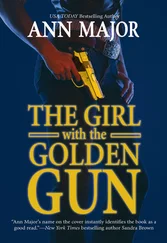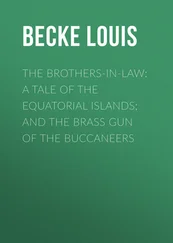One of its members, who asked not to be identified by name, lived through two shoot-outs. In the first, he and his partner—for narrative purposes, I’ll call them Nolan and Dougherty—wound up in high-speed pursuit of a stolen Lincoln, chasing it up one-way streets against oncoming traffic. “It was like something out of the movies,” Nolan recalled. “I remember my heart was pounding out of my chest.”
The fleeing car rounded a corner and stopped. One suspect leaped from the car and ran headfirst into a telephone pole so hard he was knocked to the ground. (When the officers later caught this suspect, they knew immediately they had the right man by the splinters in his face.) The other suspect drove the big Lincoln into a vacant lot where it struck a boulder, briefly went airborne, then came to rest. The officers positioned their car to provide defensive cover. The suspect fired.
“All I remember is hearing the crack of the gun going off,” Nolan told me. “The next thing I saw was blue pieces of plastic flying all over the place. My partner went down—I thought he’d been shot.”
In fact, Dougherty had ducked for cover as the first bullet struck the blue roof light and shattered it. The suspect was firing a powerful .357 Magnum revolver and carried a speed loader, a device that holds six bullets and allows them to be inserted quickly into the empty chambers.
Nolan fired every shot in his service revolver and reloaded. The suspect took off. Nolan sprinted after him. At one point Nolan told him to halt, then dropped to one knee and aimed at his back. He didn’t fire. “If I had shot him in the back, I’d be in state prison right now,” he said. He and Dougherty returned to the Lincoln, where they found evidence that allowed them to track the suspect to an address in Boston’s Dorchester section. He was hiding inside an oil furnace. “To this day,” Nolan said, “I don’t know how he got in there.”
Until the capture, Nolan had been running on adrenaline. “It happens so quickly,” he recalled. “All these little items, like a checklist. Is it a clear shot? Is everybody out of the way? Then boom, boom, boom—all in a split second. I was trained to do this, but I wasn’t trained how to deal with it.” Afterward, he said, “I came apart at the seams. I just started shaking. I did what I do best. I got absolutely drunk out of my mind.”
The incident had a lasting impact. He became an alcoholic. He lost his wife to divorce. Now on the wagon, he tries to help other officers vent the powerful emotional reactions they experience after a shooting. Nolan agrees people who feel moved to buy a gun for self-defense ought to be able to do so, but with a caveat: “You need to get some extensive training. Appreciate what a handgun is and what it can do.”
On the whole, he said, society needs to take a longer view and examine why it is that many people feel the criminal justice system has failed them. “I don’t want to see any more guns,” he said. “Guns kill people. That’s what they’re for. They kill people. And there’s just too many of them out there already.”
Such concern, however, has little persuasive power for people who see crime encroaching from all sides. Lisa Hilliard, the banker who took Paxton Quigley’s Georgia course, told me she realized how vulnerable she was when she wound up stranded alone on an Atlanta freeway late one night. “I couldn’t help but imagine my name on the news, you know, ‘Decatur woman, age thirty-three…’”
Although she had never shot before, she lived among guns. Her husband owned many and kept one loaded by the bedside. The time had come, she reasoned, to learn how to use those guns and take responsibility for her own safety. “Girls grow up believing that they’re going to be taken care of,” she said, then added softly, “But it just ain’t so.”
♦ ♦ ♦
Why do we place so much trust in guns to solve our problems? What accounts for the official deference we as a nation afford guns, despite the growing count of dead and wounded and the fact that polls show most of us favor federal regulation of firearms? The belief in guns as tools for self-defense certainly contributes to this national tolerance. So too, obviously, does America’s rural passion for hunting deer and other game. Neither, however, can fully explain how firearms became lodged in the national psyche as objects of almost sacred stature.
A good deal of the answer lies in the frontier West—not the real frontier as experienced by the hundreds of thousands of pioneers and gold-seekers of American history, but the imagined West, conjured over the last century by Hollywood directors, TV producers, nineteenth-century reporters, dime novelists, and the frontier heroes themselves, of a vast plain of violence that only guns could subdue. “What people believe to be true is often as important as reality,” wrote historian W. Eugene Hollon, “and generations of Americans have grown up accepting the idea that the frontier during the closing decades of the nineteenth century represented this country at its most adventurous as well as its most violent.”
Somehow, we came to believe that guns really did win the West. But how was this notion instilled? Where did we lose the thread of history and pick up instead the silken ribbon of myth?
At times, surely, the early frontier lived up to its wild-and-woolly reputation, as when the Indian wars were in full swing, and when competition over the use of land led to bloody range battles such as the April 1892 Johnson County War in northern Wyoming. For the average resident of the frontier, however, life was more often marked by hard work, loneliness, and stupefying boredom. People rarely locked their doors, or for that matter, even bothered to install locks. Burglary was rare, rape close to nonexistent (although rape has always been, and undoubtedly was then, an underreported crime). Frank Prassel, an Old West historian, examined records of the U.S. District Court in New Mexico Territory dating to the court’s opening in 1890 and found that of its first twenty-six cases, twenty-two involved charges of “fornication” and adultery. Prassel observed, “The West’s lawless element obviously had something on its mind other than bank robbery and cattle theft.”
One of the great entertainments was the rare hanging, which attracted spectators from far off. Hangings were festive events at which the condemned man was expected to offer a remark or two. Moments before Jeremiah Bailey was executed in Abilene, Kansas, on January 5, 1872, he told the crowd below, “I am on the scaffold about to be launched into the other world. What has brought me to this? Let me tell you, and let these words ring forever in your ears. It was whiskey and the carrying of firearms. Whiskey and the bearing of pistols have ruined me.”
The proliferation of guns and alcohol throughout the West, with the added incendiary influence of gambling, made for dangerous conditions late on a frontier night, especially in mining towns whose occupants were primarily adventurous young men. According to historian Roger D. McGrath, who studied life in the mining towns of Bodie, California, and Aurora, Nevada, a chance remark, an old grudge, or an ill-advised challenge to another man’s ego could readily ignite an impromptu gun battle. If one of the parties died, his killer would typically be acquitted for having fired in self-defense. Ordinary citizens tolerated such “fair fights” among consenting hard characters. Anyone who stayed out late with armed, drunken men invited trouble.
Nonetheless, the homicide rate in many frontier towns was surprisingly low. Robert Dykstra, a specialist on Kansas cattle towns, found evidence of only forty-five homicides from 1870 to 1885 in the fabled towns of Abilene, Caldwell, Dodge City, Ellsworth, and Wichita. That works out to 0.6 killings per town per year, not quite the frequency Hollywood has led us to expect.
Читать дальше


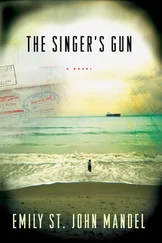

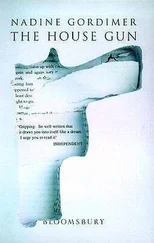

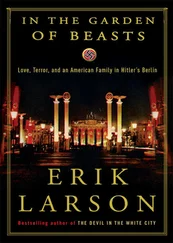

![Ричард Деминг - Whistle Past the Graveyard [= Give the Girl a Gun]](/books/412176/richard-deming-whistle-past-the-graveyard-give-t-thumb.webp)
